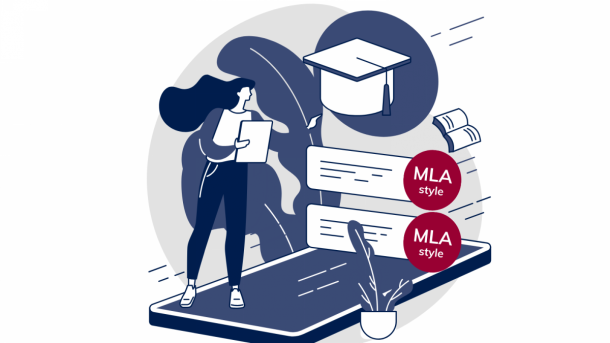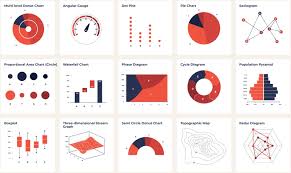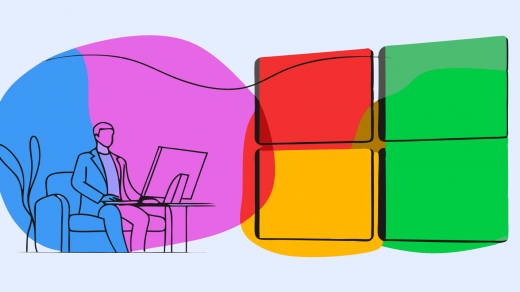In the digital age, scholarly communication has expanded beyond journals and conference presentations. Researchers, students, and educators increasingly use blogs, academic websites, and platforms like Substack to share insights, reflections, and original research. While these platforms democratize knowledge dissemination, they also pose a challenge: how to maintain academic rigor and proper citation practices in a less formal, web-native environment. The Modern Language Association (MLA) style, widely used in humanities disciplines, provides a framework that can bridge the gap between traditional academic writing and online publication.
This essay explores how MLA style can be adapted for academic blogging and online portfolios, emphasizing practical strategies, ethical considerations, and examples. It also examines common challenges and proposes methods to balance readability with citation integrity in digital contexts.
Applying MLA Principles Online
MLA style was originally designed for print scholarship, emphasizing in-text citations, clear attribution, and a works cited page. These principles remain crucial in digital contexts, but they require thoughtful adaptation.
In-Text Citations: Online readers often skim content rather than engage with dense text. Long parenthetical citations may disrupt flow. Bloggers can integrate references naturally into prose. For example:
According to Smith, the evolution of digital archives has transformed research practices (45).
Alternatively, hyperlinks can supplement in-text citations for readability, provided the source is stable and reputable. A balanced approach preserves attribution while keeping content accessible.
Works Cited Pages in Blogs: Academic websites or portfolio pages often conclude articles with “References” or “Sources.” Adapting MLA for web publication requires attention to URLs, access dates, and digital object identifiers (DOIs). For instance:
-
Traditional MLA: Smith, John. Digital Archives and Research. New York: Academic Press, 2019.
-
Adapted for a blog: Smith, John. Digital Archives and Research. New York: Academic Press, 2019. Accessed 12 Oct. 2025. https://www.digitalarchives.com.
This ensures readers can trace sources while conforming to MLA standards.
Quoting Multimedia Sources: Academic blogs frequently incorporate videos, podcasts, and images. MLA provides guidelines for these formats, emphasizing credit to creators and platforms. For example, a video citation may include the director, title, platform, upload date, and URL. This transparency maintains scholarly integrity in nontraditional media.
Cross-Platform Consistency: Maintaining MLA consistency across Substack posts, WordPress blogs, and academic portfolios is vital. Templates for in-text citations, references, and hyperlink usage can streamline workflow and ensure credibility.
Benefits of MLA in Digital Scholarship
Adhering to MLA style online provides several key advantages:
Credibility and Professionalism: Even in informal online settings, readers—whether peers, instructors, or prospective collaborators—expect clear attribution. MLA signals rigorous research habits and fosters trust.
Intellectual Honesty: Proper citation protects authors from plagiarism allegations and respects the work of others. Blogs and portfolios often reach wide audiences; mistakes or omissions can damage reputation.
Ease of Updating Content: Online publications are dynamic; posts can be revised, expanded, or corrected. Maintaining MLA-formatted references ensures that edits do not compromise scholarly integrity.
Enhanced Discoverability: Hyperlinked and properly formatted citations improve SEO, making content more discoverable. Linking to authoritative sources can also create a web of scholarly connections, increasing engagement with research communities.
Pedagogical Value: For student bloggers, practicing MLA online reinforces foundational academic skills, which translate to formal essays, research papers, and future publications.
Challenges and Solutions
Despite benefits, adapting MLA for online platforms is not without hurdles.
Challenge: Reader Experience vs Citation Fidelity
Lengthy parenthetical citations or multiple footnotes can disrupt flow. To balance readability with MLA rigor:
-
Use narrative attribution (e.g., “As Smith argues…”).
-
Employ endnotes or “Further Reading” sections for supplementary references.
-
Hyperlink sparingly and selectively, prioritizing authoritative sources.
Challenge: Dynamic Content and Link Rot
Web sources can disappear or be updated, undermining citations. Solutions include:
-
Archiving webpages via tools like the Wayback Machine.
-
Recording access dates in MLA format.
-
Using DOIs for journal articles to provide stable links.
Challenge: Multimedia Integration
Quoting podcasts, YouTube videos, or social media posts requires format awareness. Solutions include:
-
Following MLA templates for digital media.
-
Adding timestamps for quoted segments in audio/video.
-
Crediting creators prominently in captions and references.
Challenge: Maintaining Consistency Across Platforms
When publishing on multiple platforms, inconsistent citation formatting can confuse readers. Solutions:
-
Develop a personal MLA style guide adapted for your digital outputs.
-
Use reference management software like Zotero or EndNote for online sources.
-
Establish templates for blog posts, portfolio entries, and newsletters.
Practical Guidelines and Examples
To illustrate MLA adaptation in online scholarship, consider the following scenarios:
Example 1: Substack Newsletter Post
Topic: The evolution of digital humanities.
In-text:
Digital archives are reshaping research practices, offering unprecedented access to historical materials (Smith 45).
References:
Smith, John. Digital Archives and Research. New York: Academic Press, 2019. Accessed 12 Oct. 2025. https://www.digitalarchives.com.
Example 2: Academic Portfolio Blog
Topic: Literary analysis of postmodern novels.
In-text:
As Barth suggests, metafiction challenges conventional narrative structures (Barth 72).
References:
Barth, John. Lost in the Funhouse. New York: Doubleday, 1968. Accessed 12 Oct. 2025. https://www.libraryarchive.com/funhouse.
Example 3: Multimedia Citation in Blog Post
Topic: Podcast discussion on climate change.
In-text:
The podcast emphasizes urban resilience strategies (Green 12:35).
References:
Green, Emily. Climate Adaptation Strategies. Podcast episode. Urban Futures, 15 Jan. 2025. Spotify, https://open.spotify.com/episode/climate.
Table: Adapting MLA for Digital Platforms
| Element | Traditional MLA Format | Adapted for Blogs/Portfolios | Notes |
|---|---|---|---|
| Book | Smith, John. Digital Archives. 2019. | Smith, John. Digital Archives. 2019. Accessed 12 Oct. 2025. <URL> | Include access date for online reference |
| Article | Johnson, Lisa. “Digital Trends.” Journal of Media Studies, vol. 5, no. 2, 2018, pp. 23-40. | Johnson, Lisa. “Digital Trends.” Journal of Media Studies, vol. 5, no. 2, 2018, pp. 23-40. Accessed 12 Oct. 2025. <URL> | Provide permanent link or DOI |
| Video | N/A | Director, Title. Platform, Upload Date. <URL> | Include timestamp if quoting |
| Podcast | N/A | Host. Podcast Title. Episode Title, Date. Platform, <URL> | Include timestamp if quoting |
| Blog post | N/A | Author. “Post Title.” Blog Name, Date. <URL> | Hyperlink selectively; include access date |
This table clarifies how to maintain MLA consistency across diverse digital media while preserving reader accessibility.
Ethical Considerations
Adapting MLA for online contexts also requires attention to ethical issues:
Credit and Attribution: Always acknowledge intellectual property. Even informal platforms require proper citation to respect authorship.
Avoiding Misrepresentation: Summaries, paraphrases, and quotes must accurately reflect original content. Distorting sources compromises integrity.
Transparency in Edits: Unlike printed essays, digital posts can be edited post-publication. Maintaining a clear record of changes demonstrates accountability and preserves scholarly trust.
Privacy and Permissions: When citing social media content or personal communications, ensure consent and avoid disclosing private information without authorization.
By integrating MLA principles responsibly, bloggers and portfolio creators uphold academic standards, protecting themselves and respecting the work of others.
Conclusion
As academia evolves in the digital era, MLA style remains a vital tool for ensuring scholarly integrity. By adapting traditional citation practices to blogs, online portfolios, and Substack newsletters, researchers and students can maintain credibility, foster trust, and enhance reader engagement. While challenges exist—such as balancing readability with citation fidelity, managing dynamic content, and integrating multimedia—these can be addressed through thoughtful adaptation, structured templates, and ethical diligence.
Digital scholarship offers opportunities for wider dissemination, interdisciplinary connections, and innovative storytelling. Adhering to MLA style ensures that these benefits are realized without compromising academic rigor. Ultimately, effective adaptation of MLA in online contexts empowers writers to communicate confidently, ethically, and creatively, bridging the gap between traditional scholarship and contemporary digital communication.
By following practical guidelines, integrating technology thoughtfully, and remaining mindful of ethical responsibilities, scholars can produce high-quality digital content that honors both the integrity of their work and the accessibility of knowledge for a broader audience.




